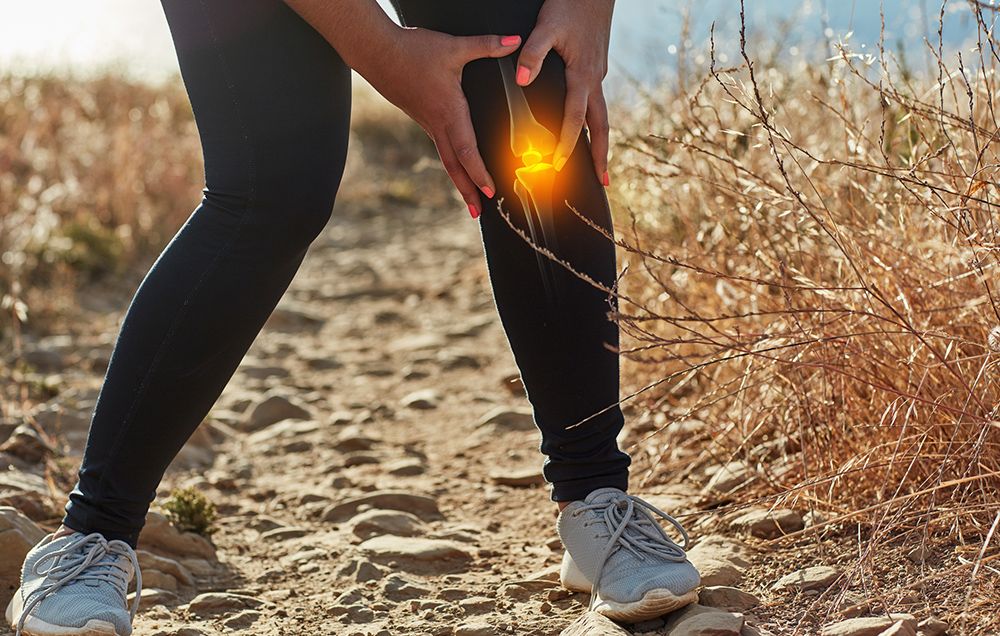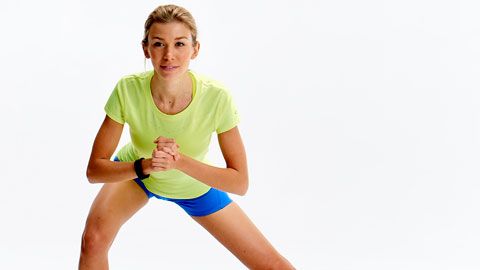The outside of your knee aches after a bike ride. Or, when you walk downstairs, the top of your knee feels like it’s filled with glass.
Knee pain can stem from a variety of causes—from degenerative arthritis to a mild running injury. In some cases, a combination of issues can come together to promote pain. And just as the triggers of knee pain are complicated, there is no simple, one-size-fits-all remedy for knee pain, says Kevin Shea, an orthopedic surgeon at St. Luke’s Health System in Boise, Idaho and a member of the American Academy of Orthopedic Surgeons.
“It really has to be dealt with on a case-by-case basis,” he says. “But there are a lot of off-the-shelf products that are good, low-cost options that many people have success with.” We’ll get to those in a minute. But first, Shea has a few pieces of general advice for knee-pain sufferers.
For one thing, if exercise seems to fire up your ache, DON’T assume the solution is to stop working out. “Especially for people with degenerative arthritis, a lot of them think to stop, but the evidence we have shows that’s counterproductive,” he explains.
Instead of giving up exercise, you want to switch to lower-impact workouts. “If you were running, try cycling or the elliptical,” he says. Or, if you live to run, try to find an unpaved trail or some other surface that provides a softer landing for your footfalls.
Shea also recommends keeping a diary of your daily physical activity. That diary should include a record of how your knee pain reacted to exercise that day and in the days that follow. “You’re looking for patterns between your exercise and how your knee pain responds,” he says. Identifying these patterns can help you adjust your workouts to reduce your pain.
Finally, if your knee pain is so severe that you can no longer exercise, Shea says it’s time to see someone—your primary care physician or a physical therapist. That person can figure out what’s likely going on, and offer you specific exercises or treatments—including anti-inflammation shots or drugs—to get you back on your feet and feeling better.
Assuming you’re not at that stage, what products can help limit or eradicate your pain? Here are five with expert- or study-backed pain benefits.
Merrell Vapor Glove 2 Barefoot Trail Running Shoe
$60.00 Buy Now
A growing body of evidence suggests too-long strides—made possible by heavily padded, heel-strike running shoes—contribute to knee injuries and other sources of aches and pain among runners. One 2015 study from the University of Wisconsin linked a shorter running stride with lower impact forces in the knee’s major joints. If runners could shorten their strides and land farther forward on their foot, they might reduce pain and lower their risk for injury, the study concluded.
Doing that is easier said than done. But a study from the University of Virginia found barefoot-style “minimalist” running shoes naturally promote shorter running strides. That study also found switching to minimalist running shoes resolved injuries and reduced knee pain in many of the people who tried them.
“Barefoot and loving it,” writes one buyer of these Merrell minimalist running shoes.
“For me at least, this did relieve almost all of my knee pain,” another writes. “Wearing these shoes has resulted in a sense of freedom of movement due to having the opportunity to forget about my knees!”
Posture Corrective Heel Cups
$9.00 Buy Now
“Shoe inserts have actually been studied to some degree,” Shea says. “They haven’t been shown to make a consistent difference for everyone, but I know some people experience real pain relief.” He says that shoe inserts are also a low-cost intervention—and so worth a try. Echoing Shea’s statements, one 2015 review study in JAMA found evidence that “lateral wedge insoles” like these heel cups could offer some knee-pain sufferers relief.
“My knee was bothering [me] to the point where I had to cut back on my exercise,” says one reviewer. “These did the trick . . . [k]nee pain is gone and I can buy any shoe I want.”
Winzone Knee Brace Support Sleeve
$30.00 Buy Now
Like shoe inserts, Shea says knee braces won’t work for everyone. “But I have patients who swear by them,” he adds. Again, as with shoe inserts, some research supports the use of knee braces to knock down pain. One 2014 study found braces could significantly reduce pain among osteoarthritis sufferers.
“[I] have been having severe pain in one knee when I go down the stairs,” writes one buyer who works as a server. She decided to give the Winzone brace a try. “It was amazing! Zero pain at the end of the night!”
“Better than the one I got from my doctor,” writes another reviewer. “This brace helped me get back to the gym.”
UFlex Athletics Knee Compression Sleeve
$12.00 Buy Now
Compression garments, as the name suggests, are designed to fit tightly enough to compress the skin, and so promote blood flow. One 2015 study in the journal Physiotherapy found compression sleeves can be an effective treatment against knee pain. That study also found compression sleeves can stabilize knee joints—another bulwark against pain and possible injury.
“This sleeve has helped me be able to run again without sharp pain in my knee,” writes one buyer. Another says, “These work great for keeping my knees warm [and] pain free.”
LuxFit High-Density Foam Roller
$9.00 Buy Now
Foam rolling has been linked to a number of post-exercise pain benefits—including reducing muscle soreness. Experts also say an inflamed IT band is a common source of knee pain—and that foam rolling the outside of your thighs a great way to eradicate the pain.
“I. Love. This. Foam. Roller,” says one enthusiastic buyer who suffers from knee pain.
“I recommend this product to anyone with knee problems,” says another. “I have improved my knee pain and tightness from my IT band.”
* * *
The article 5 Products for Knee Pain That Actually Work originally appeared on Prevention.













